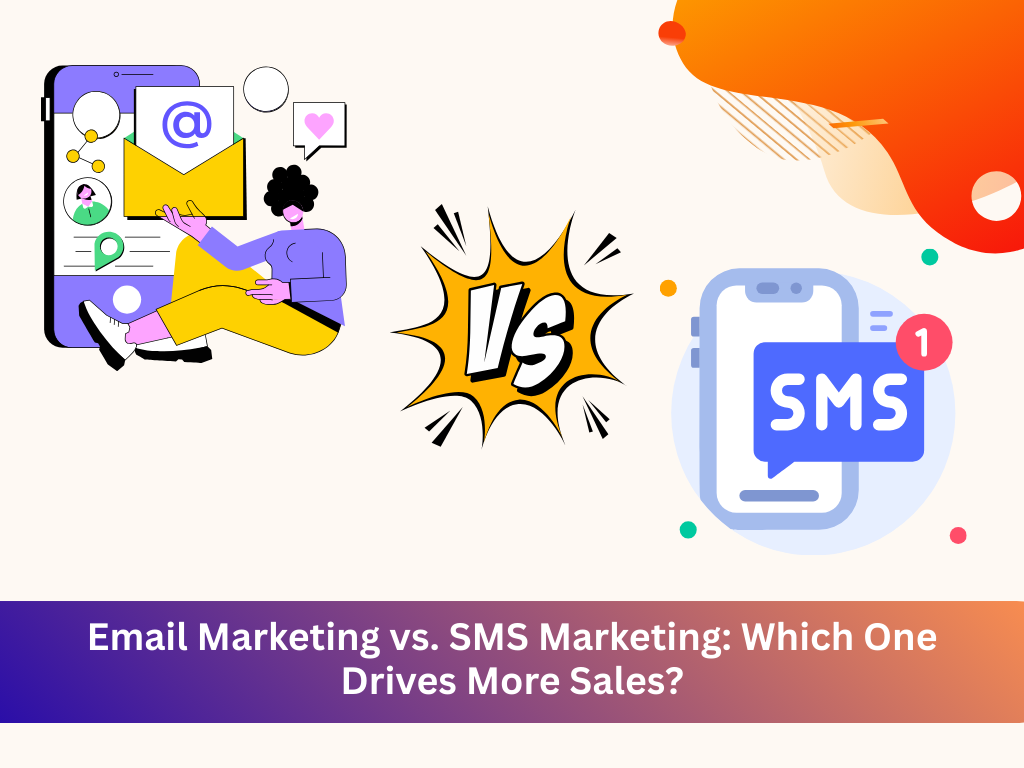
In the digital age, brands have countless ways to reach their audiences—but when it comes to driving real sales, two strategies stand out: email marketing and SMS marketing. Both offer direct access to your audience and boast impressive ROI, but each has unique strengths and use cases.
So, which one should you prioritize for better sales performance?
Let’s break it down.
What Is Email Marketing?
Email marketing involves sending commercial messages to a group of subscribers via email. These messages can include newsletters, promotions, product launches, cart abandonment reminders, and more.
Key Features:
- Visual design flexibility
- Long-form content
- Easy automation and segmentation
- High ROI (up to $42 for every $1 spent)
What Is SMS Marketing?
SMS marketing uses text messages to send short, time-sensitive communications to your audience. It’s often used for flash sales, appointment reminders, and transactional messages.
Key Features:
- High open rates (up to 98%)
- Short-form, concise messaging
- Real-time communication
- Limited formatting
Email Marketing: Strengths & Weaknesses
| Pros | Cons |
| Cost-effective for large campaigns | Lower open rates (average ~20–25%) |
| Highly customizable design | Risk of landing in spam folders |
| Suitable for storytelling and longer content | Slower engagement time |
| Excellent tracking and analytics | |
| Easy A/B testing |
SMS Marketing: Strengths & Weaknesses
| Pros | Cons |
| Near-instant open and response rates | Strict character limits |
| More personal and direct | May feel intrusive if overused |
| Great for urgent updates and flash sales | Limited creative formatting |
| Doesn’t require internet access | Can be expensive per message |
Which One Drives More Sales?
It depends on:
- Your Audience
- Younger audiences (Gen Z, Millennials) may respond better to SMS.
- B2B or professional audiences may prefer emails.
- Your Message Type
- Use SMS for urgency: flash sales, appointment reminders, limited-time offers.
- Use Email for nurture sequences, storytelling, promotions with visuals.
- Timing & Frequency
- SMS is ideal for instant, time-sensitive communication.
- Email allows for ongoing engagement and longer campaigns.
- Purchase Cycle
- For quick decisions: SMS can trigger impulse buys.
- For high-ticket items: email allows space for research and nurturing.
Real-World Data:
- SMS boasts a 45% conversion rate on average for time-sensitive campaigns.
- Email shows a 6% conversion rate but shines in long-term customer value and engagement.
Best Practice: Combine Both
Why choose one when you can leverage both?
Examples of Integration:
- Send a reminder SMS after an abandoned cart email.
- Announce a product launch via email, then follow up with a “last chance” SMS.
- Use SMS for flash promotions and email for deep content.
There’s no one-size-fits-all answer—but understanding the unique strengths of email and SMS can help you craft a smarter marketing strategy.
- Go with email when you need depth, visual content, and long-term relationship building.
- Use SMS when urgency and immediacy are key to conversions.
Pro Tip: Start with both, test engagement and conversions, and let your data decide which channel to prioritize.
At Brandifyy, we help businesses craft multi-channel campaigns that blend the power of email and SMS to boost engagement—and drive more sales.
Ready to get more from your campaigns?
Let’s talk strategy!
